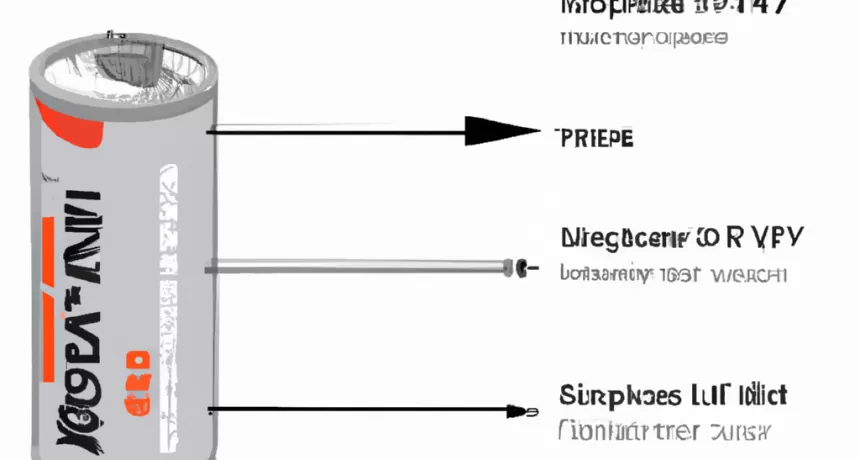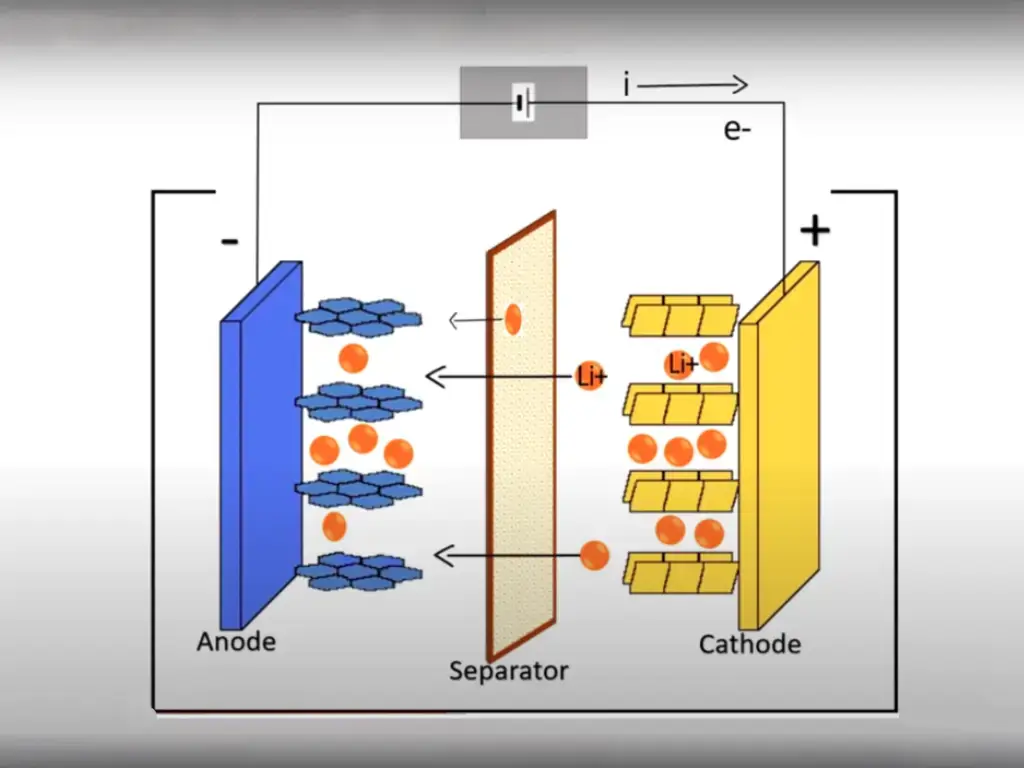What is a LiFePO4 Battery pack?
A LiFePO4 battery, short for Lithium Iron Phosphate battery, is a rechargeable battery that utilizes a specific chemistry to provide high energy density, long cycle life, and excellent thermal stability. These batteries are widely used in various applications such as electric vehicles, portable electronics, and renewable energy storage systems.
Understanding the LiFePO4 Acronym
The acronym LiFePO4 stands for Lithium Iron Phosphate. Let’s break it down further:
- Li: Represents lithium, which serves as the battery’s positive electrode.
- Fe: Represents iron, which serves as the battery’s negative electrode.
- PO4: Represents phosphate, which forms the compound that makes up the battery’s cathode material.
When combined, these elements create the foundation of the LiFePO4 battery chemistry.
A Closer Look at LiFePO4 Battery Chemistry
The LiFePO4 battery chemistry revolves around using lithium iron phosphate as the cathode material. This choice offers several advantages:
- High Thermal Stability: LiFePO4 batteries can withstand high temperatures without experiencing thermal runaway, making them safer to use.
- Low Cost: The materials used in LiFePO4 batteries, such as iron and phosphate, are abundant and inexpensive, contributing to the battery’s affordability.
- Non-Toxicity: Unlike some other battery chemistries, LiFePO4 batteries do not contain harmful or toxic materials, making them environmentally friendly.
The operation of a LiFePO4 battery involves the movement of lithium ions between the cathode and the anode during the charging and discharging process. This movement allows the battery to efficiently store and release electrical energy. One notable characteristic of LiFePO4 batteries is their long cycle life, meaning they can be charged and discharged numerous times before experiencing significant performance degradation.

Unlocking the Power of LiFePO4 Battery: A Game-Changer in Energy Storage
When it comes to energy storage, one battery technology stands head and shoulders above the rest – the LiFePO4 battery, also known as the lithium iron phosphate battery. This revolutionary innovation has taken the world by storm, offering unparalleled advantages that have solidified its position as the go-to choice for a wide range of applications, from electric vehicles to renewable energy storage systems.
High Energy Density: Maximizing Efficiency, Minimizing Space
If there’s one thing that sets LiFePO4 batteries apart from the competition, it’s their remarkable high energy density. In simpler terms, this means that these batteries can store an impressive amount of energy in a remarkably compact size. This not only allows for a more efficient utilization of space but also translates into longer operating times and increased power output compared to other battery chemistries. With LiFePO4 batteries, you can truly do more with less.
Long Cycle Life: Durability That Goes the Extra Mile
When it comes to longevity, LiFePO4 batteries are in a league of their own. These powerhouses can endure an extensive number of charge and discharge cycles without experiencing significant capacity loss. In other words, they are built to last. This exceptional cycle life makes LiFePO4 batteries the ideal choice for applications that demand frequent charging and discharging, such as electric vehicles and renewable energy systems. With LiFePO4 batteries, you can count on their unwavering performance, day in and day out.
Enhanced Safety Features: Your Peace of Mind Matters
While power and longevity are undoubtedly crucial, safety should never be compromised. Fortunately, LiFePO4 batteries excel in this area as well. Unlike some other lithium-ion batteries, LiFePO4 batteries boast enhanced safety features that provide you with peace of mind. Thanks to their inherent stability, they are less prone to thermal runaway or combustion. Their higher thermal stability significantly reduces the risk of overheating and potential safety hazards. Moreover, LiFePO4 batteries have a lower risk of explosion or fire, making them the safer option for various applications. With LiFePO4 batteries, you can have confidence in their reliability and security.
III. Applications of LiFePO4 Battery: Powering the Future
The LiFePO4 battery, also known as the lithium iron phosphate battery, has revolutionized various industries with its exceptional performance and versatility. In this article, we will explore three major areas where LiFePO4 batteries have become the go-to power source, propelling us towards a greener and more sustainable future.
A. Electric Vehicles: Fueling the Drive for Change
LiFePO4 batteries have emerged as a game-changer in the realm of electric vehicles (EVs), fueling the drive for change in transportation. With their higher energy density, longer lifespan, and faster charging capabilities, these batteries outshine traditional lead-acid batteries in every aspect. By harnessing the power of LiFePO4 batteries, EVs can travel longer distances on a single charge, eliminating the need for frequent pit stops. What’s more, the inherent safety features of LiFePO4 batteries, such as thermal stability and resistance to thermal runaway, make them the preferred choice for EV manufacturers, ensuring the utmost safety for both drivers and passengers.
B. Renewable Energy Storage: Empowering Sustainable Solutions
LiFePO4 batteries have emerged as the backbone of renewable energy storage systems, empowering sustainable solutions for a greener tomorrow. With the ability to efficiently store excess energy generated from renewable sources like solar and wind, these batteries ensure a reliable and uninterrupted power supply. During periods of high energy production, LiFePO4 batteries store the surplus energy, ready to be released when demand exceeds supply. Thanks to their high cycle life and low self-discharge rate, these batteries offer a sustainable energy storage solution for residential, commercial, and industrial applications. Furthermore, their exceptional ability to handle high discharge rates and maintain optimal performance even in extreme temperatures makes LiFePO4 batteries the perfect choice for renewable energy storage, overcoming the limitations of traditional energy storage systems.
C. Portable Electronic Devices: Unleashing Mobility and Productivity
LiFePO4 batteries have become the power source of choice for portable electronic devices, revolutionizing the way we stay connected and productive on the go. From smartphones and tablets to laptops and power banks, these batteries have found widespread use in our everyday lives. The high energy density of LiFePO4 batteries allows for longer usage times, reducing the need for frequent recharging and keeping us connected for longer. Additionally, these batteries offer enhanced safety features, such as resistance to overcharging and thermal stability, ensuring the protection of our electronic devices and our own safety. Moreover, the lightweight design and compact size of LiFePO4 batteries make them the ideal power source for portable devices, enabling us to unleash our mobility and productivity without compromising on performance or safety. https://www.youtube.com/embed/fOMK8wu7DNA
Comparison with Other Battery Technologies
Contrasting LiFePO4 battery with Lithium-Ion Batteries
When it comes to comparing LiFePO4 (Lithium Iron Phosphate) batteries with traditional lithium-ion batteries, the differences are significant and worth noting. LiFePO4 batteries are well-known for their exceptional safety features, thanks to their stable structure that minimizes the risk of thermal runaway. In contrast, while standard lithium-ion batteries offer higher energy density, they are more prone to overheating and potential safety hazards. This distinction makes LiFePO4 batteries a safer choice for applications where safety is a top priority.
Another important factor to consider is the lifespan of these batteries. LiFePO4 batteries have a longer lifespan and can endure significantly more charge cycles compared to typical lithium-ion variants. This longevity makes them an excellent choice for applications that require a reliable and long-lasting power source.
However, it’s worth mentioning that LiFePO4 batteries generally have a lower energy density compared to lithium-ion batteries. This means that they may not offer the same maximum energy capacity. However, for applications where safety and longevity are prioritized over maximum energy, LiFePO4 batteries are the ideal choice.
Differentiating LiFePO4 Battery from Lead-Acid Batteries
When comparing LiFePO4 batteries with lead-acid batteries, it becomes evident that LiFePO4 batteries have made significant advancements in technology and performance. One of the key advantages of LiFePO4 batteries is their impressive cycle life. They can endure a much higher number of charge cycles compared to lead-acid batteries, making them a more durable and long-lasting option.
In addition to their longer lifespan, LiFePO4 batteries are also much lighter than lead-acid batteries. This makes them an excellent choice for applications where weight is a concern, such as electric vehicles or portable power solutions. The reduced weight of LiFePO4 batteries not only improves overall efficiency but also enhances mobility.
Furthermore, LiFePO4 batteries require minimal maintenance compared to lead-acid batteries. This means less time and effort spent on upkeep, making them a more convenient option for users. On the other hand, lead-acid batteries, although more affordable upfront, tend to be bulkier and less efficient in terms of both charging and discharging.
Considering all these factors, LiFePO4 batteries emerge as a compelling choice for applications that require a lightweight, long-lasting, and low-maintenance power solution.

Maximizing the Lifespan of Your LiFePO4 Battery: Essential Charging Recommendations
When it comes to your LiFePO4 battery, proper charging is the key to unlocking its longevity and performance. To ensure your battery operates at its best, follow these expert tips:
1. Invest in a Dedicated LiFePO4 Charger
Don’t settle for a one-size-fits-all charger. Invest in a charger specifically designed for LiFePO4 batteries. These chargers are calibrated to provide the correct charging voltage and current, optimizing the charging process for maximum efficiency.
2. Guard Against Overcharging
Unlike some other battery chemistries, LiFePO4 batteries are not particularly prone to overcharging. However, it’s still important to disconnect the charger once the battery reaches its full charge voltage. This simple step prevents any unnecessary stress on the battery and helps maintain its overall health.
3. Embrace the Optimal Charging Temperature
For optimal results, charge your LiFePO4 battery within the recommended temperature range of 0°C to 45°C (32°F to 113°F). Charging outside of this range can impact the battery’s performance and longevity. By adhering to this guideline, you’ll ensure that your battery remains in top condition.
4. Slow and Steady Wins the Battery Lifespan Race
While LiFePO4 batteries can handle fast charging, a slower and gentler charge can significantly extend their lifespan. If time allows, opt for a lower charging current. By taking this approach, you’ll give your battery the TLC it deserves, leading to enhanced durability and performance.
Preserving Performance During Storage: Guidelines You Can’t Ignore
When it comes to storing your LiFePO4 batteries, following these guidelines will help maintain their performance during periods of inactivity:
1. Charge Before Storage
Prior to long-term storage, ensure that your battery is at a state of charge between 50% to 70%. This precautionary measure helps prevent over-discharge during storage, safeguarding the battery’s overall health.
2. Embrace the Cool and Dry Storage Environment
Your LiFePO4 battery thrives in a cool, dry place away from direct sunlight and extreme temperatures. Exposure to extreme heat or cold can gradually degrade the battery over time. By providing the right storage environment, you’re setting the stage for long-lasting performance.
3. Regularly Check Voltage, the Lifeline of Your Battery
To ensure your battery remains in peak condition during storage, it’s wise to periodically check its voltage. If you notice a significant drop in voltage, consider giving it a brief charge to maintain the recommended storage voltage. This proactive approach will help preserve the battery’s integrity and readiness for future use.
Maintenance Practices: Unlocking the Full Potential of Your LiFePO4 Battery
To truly maximize the lifespan of your LiFePO4 battery, regular maintenance is key. By following these practices, you’ll ensure your battery operates at its best:
1. Avoid the Depths of Discharge
Steer clear of discharging your battery to extremely low levels. LiFePO4 batteries perform optimally when kept above 20% state of charge. Deep discharges can lead to capacity loss, compromising the longevity of your battery.
2. Balance Charging for Optimal Performance
If your LiFePO4 battery consists of multiple cells, it’s crucial to use a balancer during charging. This ensures that each cell reaches the same voltage, preventing imbalances that can negatively impact battery performance. By embracing balance charging, you’re setting the stage for a harmonious and efficient battery experience.
3. Regular Usage: The Secret to Battery Health
If possible, make a habit of regularly using your LiFePO4 battery. Periodic usage helps keep the battery in good condition and prevents it from deteriorating due to prolonged inactivity. However, if you need to store your battery for an extended period, be sure to follow the storage guidelines mentioned earlier to maintain its performance.
4. Perform Capacity Checks: A Glimpse into Your Battery’s Health
Occasionally measuring your battery’s capacity is a proactive way to ensure it aligns with the manufacturer’s specifications. If you notice a significant decrease in capacity, it may be time to consider a replacement. By keeping a close eye on capacity, you’ll stay one step ahead and ensure your battery continues to meet your needs.
5. Follow Manufacturer Recommendations: The Golden Rule
When it comes to your specific LiFePO4 battery model, it’s crucial to adhere to the manufacturer’s guidelines and recommendations. These guidelines are tailored to maximize the battery’s performance and longevity. By following them diligently, you’re giving your battery the best chance to shine.
By implementing these expert tips for charging, storage, and maintenance, you’re setting yourself up for a long and fruitful relationship with your LiFePO4 battery. Enjoy the peace of mind that comes with knowing you’re taking the best possible care of your battery, and savor the extended lifespan and optimal performance it will reward you with.
Frequently Asked Questions
What is a LiFePO4 Battery?
A LiFePO4 battery, short for Lithium Iron Phosphate battery, is a rechargeable battery that utilizes a specific chemistry to provide high energy density, long cycle life, and excellent thermal stability. These batteries are widely used in various applications such as electric vehicles, portable electronics, and renewable energy storage systems.
What does the acronym LiFePO4 stand for?
The acronym LiFePO4 stands for Lithium Iron Phosphate. Li represents lithium, Fe represents iron, and PO4 represents phosphate. These elements make up the battery’s cathode material.
What are the advantages of LiFePO4 battery chemistry?
LiFePO4 batteries offer high thermal stability, low cost, and non-toxicity. They can withstand high temperatures without thermal runaway, the materials used are abundant and inexpensive, and they do not contain harmful or toxic materials.
How does a LiFePO4 battery work?
A LiFePO4 battery operates by the movement of lithium ions between the cathode and the anode during the charging and discharging process. This movement allows the battery to efficiently store and release electrical energy.
What are the applications of LiFePO4 batteries?
LiFePO4 batteries are used in electric vehicles, renewable energy storage systems, and portable electronic devices.
How do LiFePO4 batteries compare to lithium-ion batteries?
LiFePO4 batteries are known for their enhanced safety features and longer lifespan compared to lithium-ion batteries. However, lithium-ion batteries offer higher energy density.
How do LiFePO4 batteries compare to lead-acid batteries?
LiFePO4 batteries have a longer lifespan, are lighter, and require less maintenance compared to lead-acid batteries.
What are the essential charging recommendations for LiFePO4 batteries?
To maximize the lifespan of a LiFePO4 battery, it is recommended to use a dedicated LiFePO4 charger, guard against overcharging, charge within the optimal temperature range, and consider slow and steady charging.
What are the guidelines for storing LiFePO4 batteries?
LiFePO4 batteries should be charged to a state of charge between 50% to 70% before storage and stored in a cool, dry place away from direct sunlight and extreme temperatures.
What maintenance practices should be followed for LiFePO4 batteries?
Maintenance practices for LiFePO4 batteries include avoiding deep discharges, using a balancer during charging for multiple cell batteries, regularly using the battery, performing capacity checks, and following manufacturer recommendations.





2 thoughts on “What is a LiFePO4 Battery? Understanding the Chemistry and Applications”
Hello, im noob 🙂
Hi ChrisFliny
Can I help you?